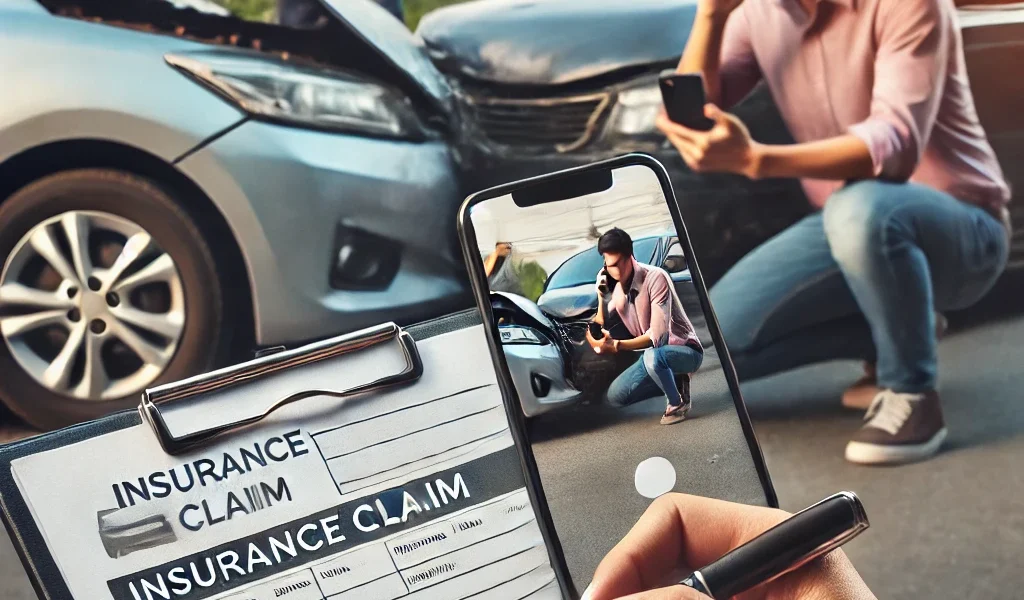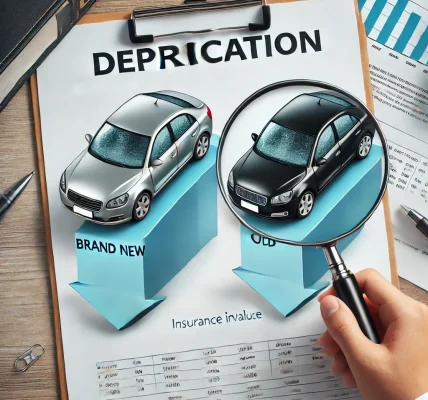Car accidents can be stressful, but knowing how to claim car insurance properly can make the process much smoother. A well-prepared and timely claim ensures that you receive the compensation you deserve while avoiding unnecessary delays. This step-by-step guide will walk you through everything you need to know about filing a car insurance claim after an accident, including the essential documents, dos and don’ts, and how to maximize your claim.
Step 1: Ensure Safety FirstBefore thinking about the insurance claim, your priority should be safety.
Check for injuries: Ensure that you and all involved parties are safe. If anyone is injured, call emergency services immediately.
Move your vehicle (if possible): If the accident is minor and your car is blocking traffic, move it to a safer location.
Turn on hazard lights to alert other drivers.
Call the police: In many cases, a police report is required for filing an insurance claim, especially for severe accidents.
Step 2: Collect Essential InformationGathering accurate details at the accident scene is crucial for a successful claim.
Information to collect:✅ Details of all involved parties:
Names, addresses, and contact numbers
Insurance provider and policy number
Driver’s license and vehicle registration details
✅ Accident Details:
Date, time, and exact location of the accident
Weather conditions and road conditions
✅ Witness Information:
If there were any witnesses, collect their contact details. Their statements can be useful in case of disputes.
✅ Police Report:
If law enforcement is involved, note the officer’s name, badge number, and the police report number.
Step 3: Document the Scene with Photos & VideosClear visual evidence is vital to support your claim. Use your smartphone to capture:
📷 Photos of the accident scene, including:
Vehicle damage (yours and the other party’s)
License plates of all vehicles involved
Street signs and landmarks
Skid marks, broken parts, or road debris
Any visible injuries (if applicable)
📹 Videos:
Walk around both vehicles to capture the extent of damage
If there are traffic signals or cameras nearby, record their location
Step 4: Notify Your Insurance Company ImmediatelyPromptly reporting the accident to your insurer helps speed up the claims process.
Most insurance providers have a 24/7 helpline for accident claims.
Some companies offer a mobile app where you can report claims instantly.
Provide accurate details and avoid admitting fault at this stage.
🔹 What NOT to say: Avoid saying “It was my fault” before an official investigation is conducted.
Step 5: File a Car Insurance ClaimOnce you have reported the accident, your insurer will guide you through the claim process.
Documents Required for Filing a Claim:📑 Claim form (provided by your insurer)
📑 Copy of your insurance policy
📑 Police report (if applicable)
📑 Photos/videos of the accident scene
📑 Repair estimates from an authorized service center
📑 Medical reports (if injuries are involved)
📑 Witness statements (if available)
Submit these documents as per your insurer’s instructions via email, app, or in person.
Step 6: Inspection & Damage AssessmentYour insurance company may assign an adjuster to inspect your vehicle’s damage.
The adjuster will determine if your car is repairable or a total loss.
Some insurers allow you to get your car repaired at a network garage, covering costs directly (cashless claim).
If you choose a non-network garage, you may need to pay the costs upfront and get reimbursed later.
Step 7: Claim Settlement & RepairsDepending on the policy coverage and damage assessment, the insurer will:
Approve repairs: If the damage is repairable, you will receive an estimate, and repairs will be done at an approved service center.
Offer a settlement: If the car is declared a total loss, you will receive a payout based on the car’s insured declared value (IDV) minus deductibles.
Reimbursement: If you paid for repairs out-of-pocket, submit the invoice for reimbursement.
🛠️ Pro Tip: Always keep copies of all receipts and claim documents for future reference.
What If the Other Driver is Uninsured?If the other driver involved in the accident does not have insurance, your options include:
Uninsured motorist coverage (if included in your policy) can cover damages.
Filing a lawsuit against the at-fault driver (if necessary).
Common Mistakes to Avoid When Filing a Claim❌ Delaying reporting the accident: Many insurers have a time limit for filing claims.
❌ Providing incorrect information: Always be truthful; false statements can lead to claim denial.
❌ Not following up: Stay in touch with your insurance provider for updates on your claim status.
❌ Settling privately without involving insurance: This can lead to issues if hidden damages or injuries arise later.
FAQs About Car Insurance Claims1. Will filing a claim increase my insurance premium?Not necessarily. If it’s a minor claim or you were not at fault, your premium may remain unchanged. However, multiple claims can lead to higher premiums.
- What if my claim gets rejected?If your claim is denied, request a detailed explanation from your insurer. If you believe the denial is unfair, you can:
Provide additional evidence
Appeal the decision
Seek legal assistance if necessary - Can I claim insurance if I was at fault?Yes, if you have a comprehensive insurance policy, it will cover damages regardless of fault. However, liability-only insurance covers only third-party damages.
ConclusionFiling a car insurance claim after an accident doesn’t have to be complicated if you follow the right steps. By ensuring safety, collecting evidence, notifying your insurer promptly, and understanding your policy coverage, you can maximize your claim benefits and receive timely compensation.
🔹 Key Takeaways:
✅ Always prioritize safety and gather evidence
✅ Report the accident to your insurer as soon as possible
✅ Provide all necessary documents to support your claim
✅ Avoid common mistakes that could delay or reject your claim
By being informed and proactive, you can navigate the claims process smoothly and get back on the road with minimal hassle. 🚗💨
Would you like more guidance on choosing the right insurance policy? Let us know in the comments!


